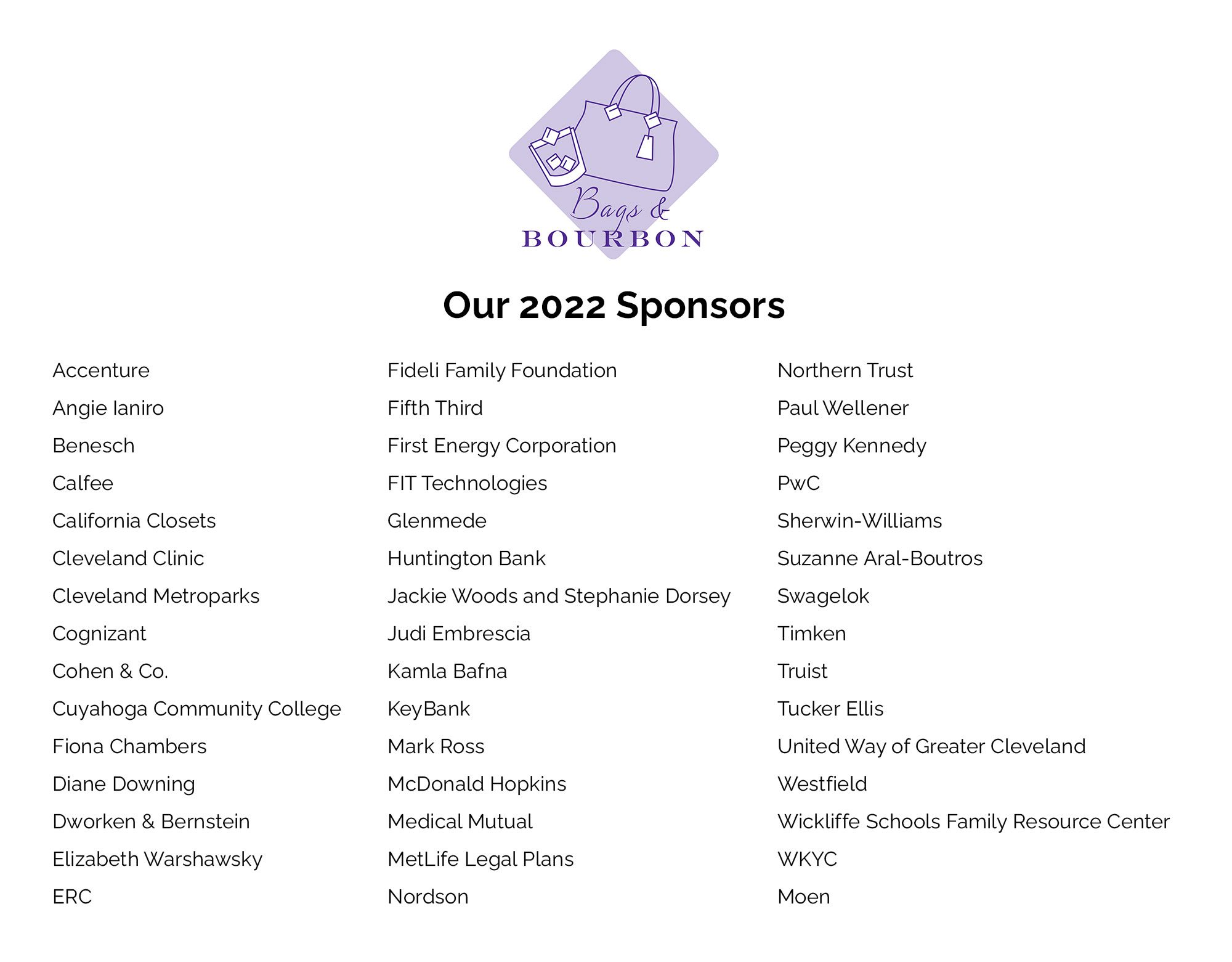High school is a pivotal time in life, filled with academic challenges and important milestones that set the stage for the future. To help students stay organized and on track, we’ve created a monthly checklist designed specifically for each grade level. This checklist covers key tasks, such as refining resumes, signing up for testing and managing the college application process. By following these guidelines, students can ensure that they’re making the most of their high school years and preparing themselves for a successful future.
Freshman Checklist
August / September
☐ Meet your College Now advisor and/or AmeriCorps member.
☐ Get started on learning your school’s college & career planning tool (e.g., Naviance, Transeo, SchooLinks), if available. Login and complete one task (ask for assistance, if needed).
☐ Start to research careers using your school’s college & career planning tool or another online tool (e.g., Ohio Means Jobs, Big Future).
☐ Meet with your guidance counselor. Confirm that your classes will set you on the right track.
☐ Get involved! Join a club or team sport, volunteer, or work part-time.
☐ Sign up for the PSAT or Pre-ACT, if offered at your school.
October
☐ Learn how to calculate a Grade Point Average (GPA).
☐ Take the PSAT or Pre-ACT, if offered at your school ( your results will not be used for college admission).
☐ Investigate opportunities to volunteer in your community.
☐ Take the PSAT or Pre-ACT, if offered at your school ( your results will not be used for college admission).
November
☐ Review first quarter grades. Develop a plan to maintain or improve your GPA before the end of the semester.
☐ Establish a SMART goal for high school.
☐ Attend a college and career fair and visit a college campus (either in-person or virtually).
December
☐ Find and complete a volunteer experience over winter break.
☐ Review and discuss course options with your family and school counselor to ensure you are on the right track.
☐ Review PSAT results and create a plan to improve your score.
☐ Prepare for end-of-semester exams. Make sure you understand how these tests might impact your GPA and ability to earn course credit.
☐ Read for fun over winter break.
January / February
☐ Attend a College Credit Plus or AP information session. Ask your school counselor for more information.
☐ Participate in a College Affordability Night with a parent or guardian to learn about financial aid.
☐ If available, use your school’s college & career planning tool to explore different careers. Visit the various tabs and complete the one or more interest or career surveys. Review videos about careers that align with your interests.
March / April / May
☐ Apply for summer opportunities (jobs, programs, internships, volunteering, job shadowing). Pay attention to deadlines – many are in April.
☐ Create a resume to keep track of what you accomplished this year. Use your school’s college & career planning tool or ask your College Now advisor for assistance.
June / July / August
☐ Make a plan for your summer. Participate in a program, volunteer, and explore careers.
☐ Invest in your success by taking time to improve your scores, read, work on Khan Academy or enroll in an ACT/SAT bootcamp or impact! program through College Now.
☐ Develop a SMART goal for the next school year.
Sophomore Checklist
August / September
☐ Meet your College Now advisor and guidance counselor to confirm that your courses will put you on the right track this year.
☐ Athletes: if you plan to play sports in college, meet with your coaches to make sure you are on track. Ask your guidance counselor about taking NCAA-approved courses.
☐ Set up or log into your college & career planning tool and familiarize yourself with the college admissions process.
☐ Create or continue to build your resume (a record of your accomplishments, awards, activities, work experience, etc.).
☐ Join extracurricular activities and volunteer in your community. If you haven’t participated in activities outside of class, now is the time to sign up! Consider school clubs, sports, a part-time job, or other activities.
☐ Ask about test dates for the PSAT and Pre-ACT. Plan to take either test in October. Use Khan Academy to prepare.
☐ Take 10th Grade Survey or Youth View Survey (Academies of Cleveland) with College Now.
October
☐ Take PSAT and/or Pre-ACT. Your results will not be used for college admission.
☐ Attend a Financial Aid Form workshop to learn about the FAFSA (Free Application for Federal Student Aid).
☐ Get involved with activities outside of class if you haven’t already. Your level of involvement and accomplishments are more important than the number of activities.
☐ Continue working on your resume and keep record of your involvement, volunteer work, and employment.
November
☐ If available, use your school’s college & career planning tool to explore different careers. Explore the various tabs and complete one or more interest and other career surveys.
☐ Look for volunteer opportunities such as food drives, reading to younger children, or supporting elderly individuals in your community.
☐ Continue to put forth your best academic effort. Ask your teachers for help, if needed.
☐ Continue working on your resume and save your best academic work in a portfolio. If you are a visual artist, work on developing your art portfolio.
☐ Check-in with your Guidance Counselor to ask questions and attend parent/teacher conferences.
December
☐ Review PSAT and Pre-ACT scores with your school counselor. Become familiar with Khan Academy, ACT Academy, and other study tools.
☐ Ask your College Now advisor about programs to support your test preparation.
☐ Prepare for end-of-semester exams.
☐ Begin researching the admissions requirements of colleges you are interested in. Compare your current scores and grades with the incoming student profile on the colleges’ admission pages to determine whether you would be admitted today.
January / February
☐ Register for AP exams.
☐ Review first semester grades and evaluate your cumulative GPA.
☐ Continue to participate in extracurricular activities. Work towards serving in leadership positions in the activities you enjoy most.
☐ Continue exploring interests and participate in career exploration.
☐ Investigate summer opportunities such as a summer job, internship, volunteer opportunity, summer camp, or opportunity on a college campus.
☐ Start visiting some colleges and include large, medium, and small campuses in your search.
☐ Review the course catalog for next year and work with your counselor to set your junior schedule. Be sure to enroll in challenging courses.
☐ Use your college & career planning tool or another resource to begin researching colleges. Develop a list of at least five schools that interest you.
☐ Review your SMART goal for the year and determine if you are on track to meet it.
☐ Read news reports, articles, and books, and practice your writing skills.
March
☐ Watch for announcements from your school on college exposure opportunities, such as college fairs or field trips.
☐ Search summer opportunities and apply for summer jobs/activities.
☐ Continue to research career options and matches to college majors.
April / May
☐ Continue to research career options and matches to college majors.
☐ Apply for summer jobs/camps/volunteer activities.
☐ Develop goals for the summer. Consider taking a summer course or participating in a program at a local college.
☐ Keep editing your resume.
☐ Check-in with your school counselor with any questions.
☐ AP exams are administered. Keep your AP Grade Report if you’re interested in earning college credit.
☐ Prepare for your semester exams.
June / July / August
☐ Complete ACT/SAT prep by reading and increasing your vocabulary or taking practice tests.
☐ Visit a college campus and/or attend a career fair.
☐ Begin searching for scholarships and start saving for college.
☐ Develop a SMART goal for the next school year.
☐ Participate in an enrichment program, career shadowing, volunteer opportunity, or job and keep track by updating your resume.
Junior Checklist
August / September
☐ Meet with your guidance counselor to make sure you are on track to graduate.
☐ Sign up for College Credit Plus.
☐ Set up a system (e.g. notebook, excel sheet) to track your plans. Ask your College Now Advisor for assistance
☐ Plan to take the PSAT in October and the SAT/ACT in the spring. Review information about PSAT/NMSQT with your counselor.
☐ Login to your college & career planning tool and review your check list for junior year, including updating your Career Interest Profile.
☐ Explore college and career options through your college & career planning tool. Check college visit information through your school with visiting college admission reps.
☐ Continue participating in extracurricular activities or join one if you haven’t already. Consider school clubs, sports, part-time jobs, etc.
☐ Keep track of your accomplishments, activities, and work experience. These will be important pieces of your college applications.
☐ Attend “Cleveland Goes to College” or another college fair.
October
☐ Attend the Junior Meeting for families/students at your school.
☐ Continue to look at “College Visit Information” posted by your counselor or College Now advisor to meet with college reps visiting your school.
☐ Consider getting a job, volunteering, or joining a club and keep your resume updated with any new activities.
☐ Take the PSAT offered at your school.
☐ Meet with your College Now advisor to discuss your test prep strategies. Ask about test dates for the PSAT, ACT, and SAT.
☐ Go on a few college visits.
☐ Keep notes and highlights from each school at your visit.
November
☐ Continue to put forth your best academic effort! Colleges look closely at your junior year grades.
☐ Check in with your school counselor and teachers with any questions regarding help with study strategies, test taking, organization skills, etc.
☐ Begin preparing for semester exams.
☐ Attend your parent/teacher conferences.
☐ Continue to explore different careers.
December
☐ Review PSAT scores with your College Now advisor.
☐ Link your College Board and Khan Academy accounts to take advantage of SAT study tools.
☐ Register for an ACT/SAT test prep program such as impact! or a boot-camp with College Now.
☐ Register for the SAT or ACT national test date. Ask your counselor if you qualify for a fee waiver.
☐ Consider setting up a job shadowing opportunity to see if the field you are interested in is really what you think it is. Ask your counselor or College Now advisor for assistance, as needed.
January / February
☐ Work with your school counselor to set your senior schedule and ensure you are on track to graduate. Be sure to enroll in challenging courses.
☐ Learn about and register for CCP (College Credit Plus) courses.
☐ Research colleges or other options for post-high school, such as training programs and apprenticeships.
☐ Continue to explore different career options and goals. Set up a job shadowing opportunity.
☐ Work on and polish your resume.
☐ Explore summer opportunities on college campuses.
☐ Begin studying for the in-school ACT or SAT and participate in impact! (after-school test prep program with College Now).
March / April
☐ Work on and polish your resume.
☐ Set up job shadowing opportunities and identify and apply for summer internships or jobs.
☐ Explore training programs, apprenticeships, and other post-high school options.
☐ Explore summer opportunities on college campuses.
☐ Keep studying for the in-school ACT or SAT, participate in impact!, an after-school test prep program with College Now.
☐ Register for an ACT/SAT national test. This is separate from the in-school test and will give you an alternative score – some students do better on one test over the other and many score higher on their second test.
☐ Learn about the college application process and identify what is important to you when looking at colleges.
☐ Meet with your College Now advisor to create a list of colleges you’re interested in. Consider the categories of “reach”, “match” and “safety schools.
☐ Look into scholarships that you may be eligible for (now or next year).
☐ Watch for communication from your school about college exposure opportunities, such as college fairs and college visits.
☐ Attend college fairs and open houses. Learn as much as you can about colleges online and visit some colleges over spring break.
☐ Make a list of teachers and/or community leaders you may want to ask for a letter of recommendation.
May
☐ Make sure you have planned for a challenging senior year. Check in with your school counselor with any questions.
☐ AP exams will be administered. Keep your AP Grade Report if you’re interested in earning college credit.
☐ Complete your final exams.
☐ Register for summer opportunities offered by College Now- programs avalaible vary but may include entrance exam test preparation, career exploration, and more!
☐ Maintain a list of colleges you are interstested in, you may be able to keep track in your College & Career planning tool platform.
☐ Ask one or two teachers (ideally academic teachers from your junior year) for letters of recommendation, depending on what your prospective colleges require. Make your request in person before the school year ends, then follow-up with an email and attach your resume.
☐ Plan to schedule campus visits at colleges/technical schools.
June / July / August
☐ Participate in a summer college readiness program, college essay writing workshop or other activities that will support your postsecondary plans.
☐ Participate in a summer ACT/SAT prep program such as a College Now boot-camp or impact!
☐ Begin your college applications. Generally, colleges will have their applications online by the beginning of August.
☐ Create your Common Application account (www.commonapp.org). Check to see if colleges you are considering use the Common Application by searching The Common Application website.
☐ Take the ACT/SAT national tests.
☐ Continue researching colleges.
☐ Schedule and attend campus visits at schools that interest you.
☐ Draft a personal statement that can be used on college and/or scholarship applications.
☐ Continue to document your questions and progress regarding your postsecondary plans.
Senior Checklist
August / September
☐ Meet with your College Now advisor to discuss the college application process, letters of recommendation, and the Common Application.
☐ Update your resume for your college applications.
☐ Make sure your class schedule is rigorous and challenging for this year.
☐ Confirm that you are on track to meet all graduation requirements.
☐ Register for the ACT (www.act.org) and/or SAT (collegeboard.org) if you are interested in retesting or taking the other test.
☐ Complete NCAA requirements if you are planning to participate in college athletics. See the NCAA Eligibility Center for more details.
☐ Ask one or two teachers, counselors, or administrators (depending on college requirements) for letters of recommendation. Ask your references what information they need from you and follow up with an email to them with your résumé attached. Please give sufficient time for them to prepare a thorough recommendation: 2-4 weeks is appropriate
☐ Compile and fine tune your prospective college list. Ensure your list includes the three categories: safety, match, and reach. Enter your list in your school’s college & career planning tool, if available, as directed by your counselor, so that you can ensure that transcripts and letters of recommendation are sent in a timely manner.
☐ Create your FSA ID (studentaid.gov). Record and save your login information in a secure place.
☐ Meet with college representatives and attend college fairs.
☐ Research the required essays for each college and work on drafting the essays.
☐ Schedule interviews at selected colleges, if appropriate.
☐ Research scholarships. Look for updates in the school’s college & career planning tool via email. Also, please listen to the daily announcements at school for scholarship opportunities.
☐ Research scholarships on colleges’ websites and with national and local organizations. Check with your counselor or College Now advisor for trusted scholarship websites.
October
☐ Continue to work on college applications and essays.
☐ Continue to meet with college representatives and attend college fairs.
☐ Create your FSA ID (studentaid.gov). Record and save your login information in a secure place.
☐ If you are applying to selective colleges that require the CSS Profile, complete this as soon as possible after it opens on October 1st.
☐ Register for the SAT and/or ACT if you haven’t done so already and you plan to retest or take the second test.
☐ Complete college/scholarship essays and personal statements.
☐ Pay attention to early application deadlines (e.g., November 1st). Finalize and send any early action or early decision applications this month.
☐ Attend any school-sponsored Financial Aid Night or other college-related programs with your parent/guardian.
☐ Start setting aside money for college deposits, usually due May 1st. Saving a bit each month between now and May will make it easier to pay the $200-$800 that will be due.
☐ Continue to apply for scholarships.
November
☐ Consider setting up a job shadowing opportunity for the winter break.
☐ Follow your school’s procedure for sending your transcripts to all of your colleges.
☐ Keep up your grades! Colleges consider senior grades seriously.
☐ Continue to refine your applications for winter deadlines. Ensure that instructions have been followed and that details are accurate.
☐ Continue to apply for scholarships.
☐ Ensure that your FSA ID has been created and assist parent(s) in your household, if needed, with creating one(s) as well.
December
☐ File the FAFSA (Free Application for Federal Student Aid) as soon as it is available. Watch your email for notification from the U.S. Department of Education that your Student Aid Report is available and take any recommended or required actions.
☐ If you applied Early Decision or Early Action, look for admissions decisions to arrive by email, U.S. mail, and/or your college portal.
☐ Continue submitting college applications for upcoming regular decision deadlines. Be certain that all required components have been sent (e.g., transcripts, test scores).
☐ Check the deadlines for local scholarships; winter break may be an excellent time to prepare the applications.
☐ Once you have been accepted to a college, check the student portal regularly for announcements and items that need to be completed.
January
☐ Check on your FAFSA status and confirm that it has been successfully processed. Errors can potentially slow down the financial aid process and reduce awards.
☐ Contact admissions offices to confirm that they have received your complete set of application materials.
☐ Schedule admissions interviews, if appropriate.
☐ Continue to apply for scholarships.
☐ Continue to check your college student portal for announcements and items on your “to do” list.
February / March
☐ Plan to make a final visit to your top-choice colleges during Spring Break.
☐ Continue to do your best academically; second-semester grades are important to colleges.
☐ Continue to apply for scholarships.
☐ Notify your counselor and College Now advisor about admission decisions that you have received. If you have been waitlisted, meet with your school counselor to write a message to the college admissions office expressing your interest and asking how you can strengthen your application.
☐ Review and compare colleges’ financial aid award letters; your College Now advisor can be very helpful with this process.
☐ Continue to check your college student portal for announcements and items on your “to do” list.
April
☐ Do a final review of your college award letters.
☐ Ensure that your college has all required paperwork to date.
☐ Finalize your college choice!
☐ Prepare to submit your housing and/or enrollment deposit.
☐ Continue to check your college student portal for announcements and items on your “to do” list.
May
☐ Enrollment and housing deposits are due May 1st. Notify the other colleges to which you have been accepted that you are going elsewhere.
☐ If taking AP exams, check your score and consult with your selected college about the procedure for submitting the score for possible college credit.
☐ Request that your final high school transcript be sent to your college once final grades are posted. If you have taken dual-enrollment classes, request that an official transcript from the college be sent to the college you will be attending.
☐ If you plan to complete in DI or DII college sports, request that your final transcript be sent to the NCAA Clearinghouse.
☐ Finalize your college budget.
☐ Continue to check your college student portal for announcements and items on your “to do” list, including registering for New Student Orientation.
☐ Plan for a productive summer – e.g., job shadowing, volunteering, and/or working.
June / July / August
☐ If you plan to use federal student loans to help finance your education, complete the loan entrance counseling and sign the Master Promissory Note. Instructions for doing so will be available in your college portal or via the Financial Aid office.
☐ Pay your fall semester tuition, fees, and housing/meal plan (if applicable) bill. Direct questions to the college’s Student Accounts/Bursar’s office. Second semester bills will generally be due in December. Note the deadlines so as to avoid late fees.
☐ Prepare for placement testing by reviewing college-provided materials.
☐ Confirm requirements for maintaining your grants and scholarships with the college’s Financial Aid office.
☐ Attend New Student Orientation.
☐ Continue to check your college student portal for announcements and items on your “to do” list
☐ Start your college experience! 😊




